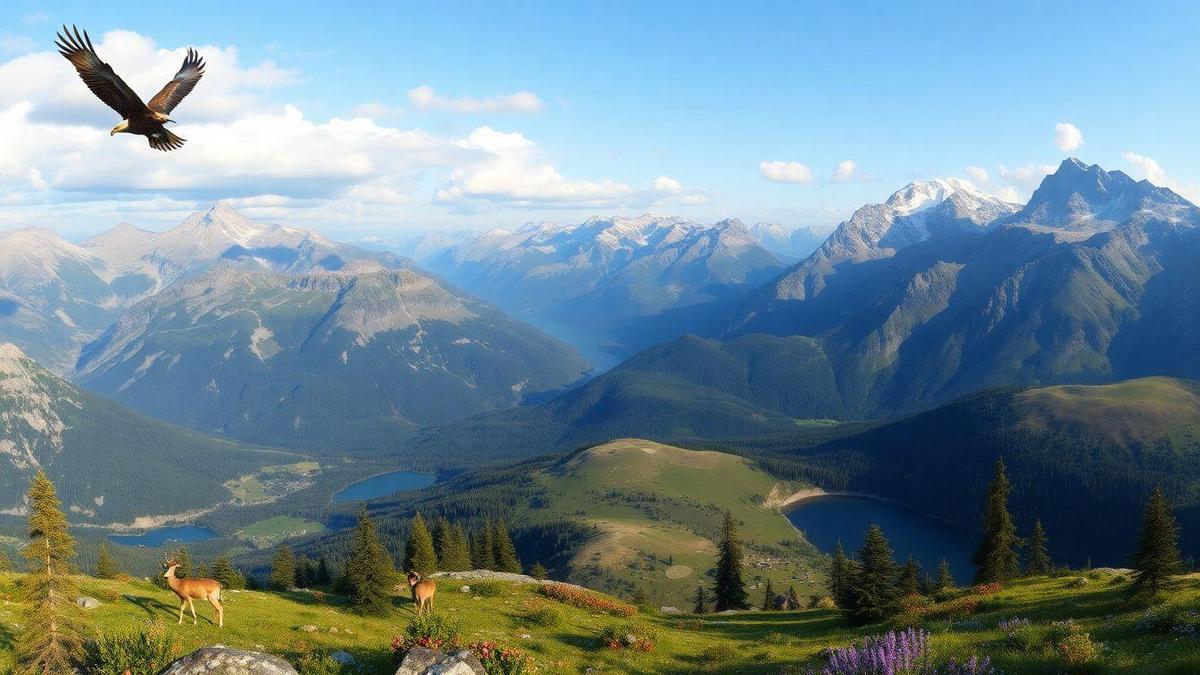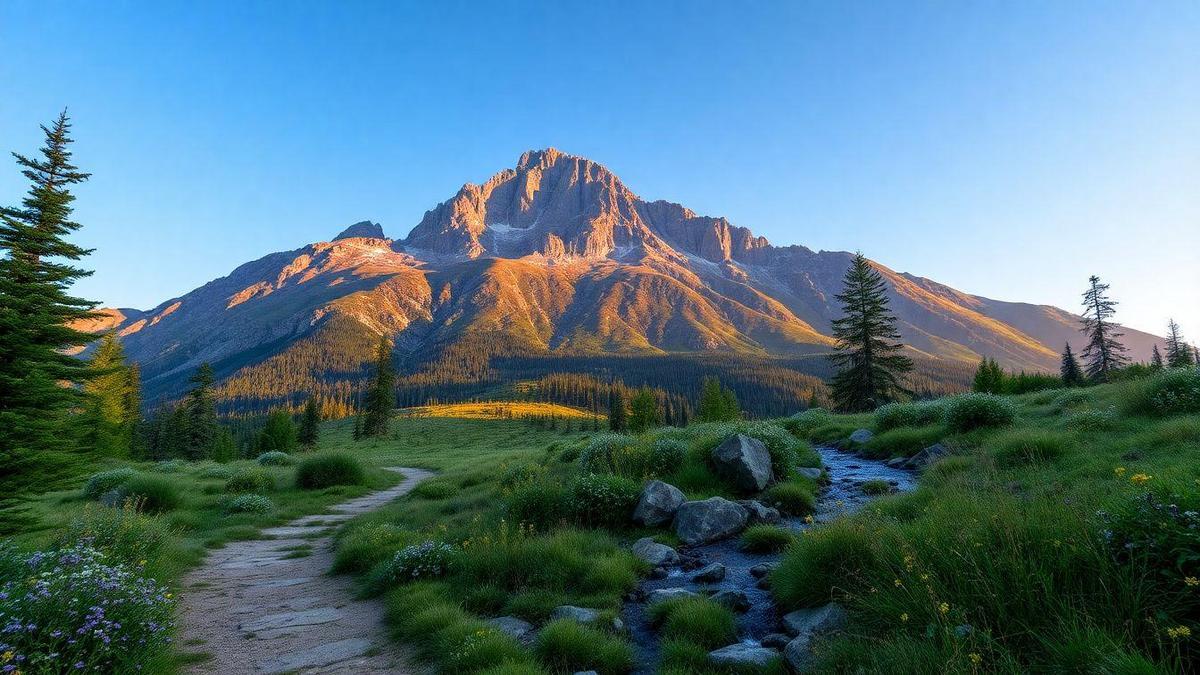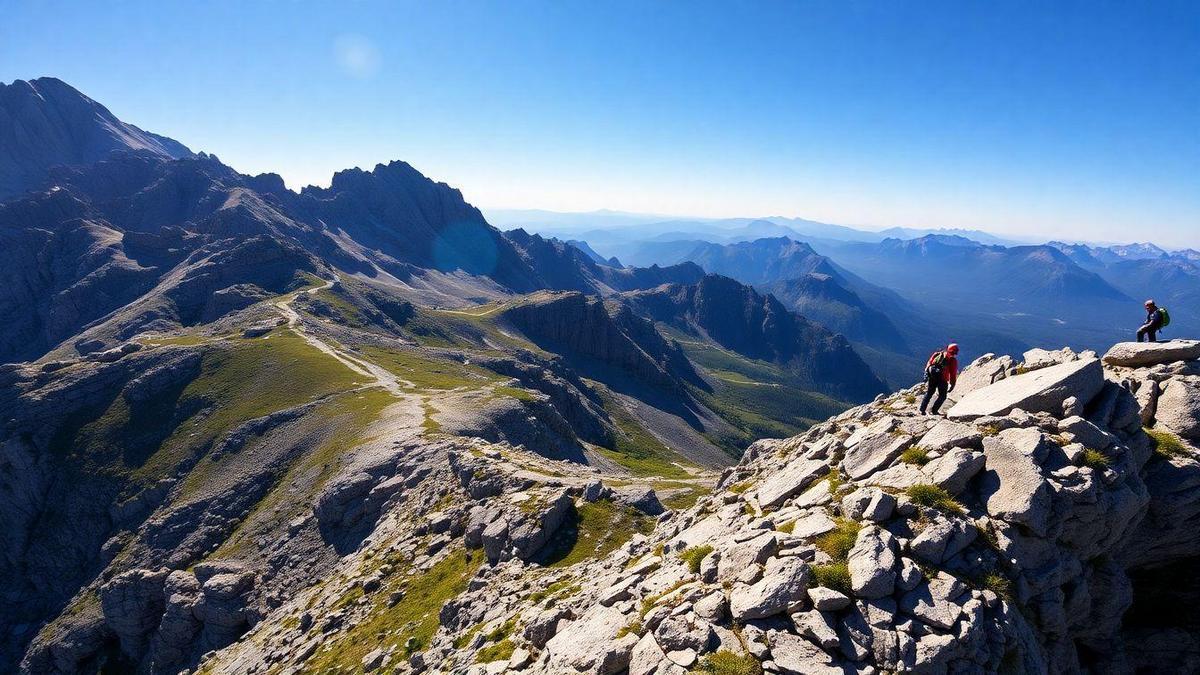
Discovering Diverse Mountains to Climb for Wildlife Observation
The Best Mountains for Wildlife Watching
When you think about wildlife observation, mountains might not be the first place that comes to mind. But they are a treasure trove of life! From the Rocky Mountains in North America to the Andes in South America, each mountain range offers something special. Here are some of the best spots for watching animals in their natural homes:
| Mountain Range | Location | Notable Wildlife |
|---|---|---|
| Rocky Mountains | USA & Canada | Elk, Grizzly Bears, Mountain Goats |
| Andes | South America | Andean Condor, Vicuña, Puma |
| Himalayas | Asia | Snow Leopard, Red Panda |
| Alps | Europe | Chamois, Alpine Ibex, Golden Eagle |
These mountains provide a diverse habitat for many species. Each area has its own charm, making it a perfect spot for you to connect with nature.
Unique Wildlife Habitats in Mountain Ecosystems
Mountains have different zones, each with its own wildlife. As you climb higher, you’ll find a mix of habitats. Forests, meadows, and rocky cliffs all support different animals. For example, the lower slopes might be home to deer and birds, while higher altitudes can host mountain goats and snow leopards.
Here are some major habitats you can explore:
- Forests: Full of life, these areas are perfect for spotting bears and owls.
- Alpine Meadows: Bright flowers attract butterflies, and you might see marmots playing.
- Rocky Areas: Ideal for spotting eagles soaring above and goats climbing steep cliffs.
Each habitat is like a stage where animals perform their daily routines. Just by being there, you can witness nature’s show.
Why Mountains Are Great for Biodiversity
Mountains are crucial for biodiversity. They create different climates and environments, which help various species thrive. The altitude changes the temperature, and this affects what plants and animals can live there.
For example, the Rocky Mountains have a wide range of habitats, which allows many species to coexist. This variety is essential because it helps keep ecosystems healthy and balanced. When you explore these mountains, you are stepping into a world rich in life and diversity.
Hiking for Wildlife: A Thrilling Adventure
How Hiking Trails Lead to Wildlife Encounters
When you lace up your hiking boots and hit the trails, you open the door to wildlife encounters that can be both exciting and memorable. Hiking allows you to step into the natural habitat of various animals. As you walk along the winding paths, you might spot deer grazing, birds singing, or even a fox peeking through the bushes. Each trail offers a different experience, and every step could lead you closer to nature’s wonders.
Many trails are designed to take you through areas rich in biodiversity. For instance, hiking in forested regions can lead you to see squirrels, rabbits, and a variety of birds. The more you explore, the more you’ll discover the thrill of wildlife observation. Just remember to keep your eyes peeled and your camera ready!
Safety Tips for Hiking in Mountain Areas
Venturing into the mountains can be a breathtaking experience, but it’s essential to prioritize your safety. Here are some safety tips to keep in mind:
- Stay on marked trails: This helps protect the environment and keeps you safe from getting lost.
- Tell someone your plans: Let a friend or family member know where you’re going and when you plan to return.
- Watch the weather: Conditions can change quickly in the mountains. Check the forecast before heading out.
- Carry a map and compass: Even if you have a smartphone, it’s wise to have traditional navigation tools.
- Pack a first-aid kit: Accidents can happen, so it’s good to be prepared.
Preparing for Your Wildlife Hiking Journey
Before you set out on your wildlife hiking adventure, preparation is key. Here’s a handy checklist to help you get ready:
| Item | Purpose |
|---|---|
| Comfortable shoes | Protect your feet on rugged terrain |
| Water | Stay hydrated during your hike |
| Snacks | Keep your energy up while exploring |
| Binoculars | Get a closer look at wildlife |
| Camera | Capture memories of your encounters |
| Sunscreen | Protect your skin from UV rays |
| Insect repellent | Keep bugs at bay while you enjoy nature |
By following these tips and preparing well, you can embark on a wildlife hiking journey that’s not only safe but also filled with unforgettable moments.
Photography Opportunities in Mountain Habitats
Capturing Stunning Wildlife Photos in Nature
When you think of mountains, you might picture breathtaking views and fresh air. But have you ever considered the amazing wildlife that calls these places home? From soaring eagles to playful mountain goats, mountain habitats offer a treasure trove of opportunities for wildlife photography.
Imagine standing quietly on a rocky ledge, waiting for that perfect moment. The thrill of capturing a majestic animal in its natural environment is like no other. Each click of your camera can tell a story, revealing the beauty of nature.
Essential Gear for Wildlife Photography
To make the most of your wildlife photography adventure, having the right gear is key. Here’s a simple table to help you gather what you need:
| Gear Item | Purpose |
|---|---|
| Camera | To capture high-quality images |
| Telephoto Lens | For close-up shots from a distance |
| Tripod | To keep your camera steady |
| Extra Batteries | To avoid missing shots due to low power |
| Binoculars | To spot animals before photographing them |
Having the right tools can make a world of difference. You want to be ready to snap that perfect shot when the opportunity arises.
Tips for Photographing Animals in the Wild
Photographing wildlife can be tricky, but with a few handy tips, you can improve your skills:
- Be Patient: Animals may not show up right away. Sit quietly and let them come to you.
- Use Natural Light: Early mornings or late afternoons provide the best light for photos.
- Focus on Eyes: Capturing the eyes of an animal can bring your photos to life.
- Watch Your Background: A clean background helps your subject stand out.
- Respect Wildlife: Always keep a safe distance and never disturb their habitat.
Each of these tips can help you take stunning photos that showcase the beauty of wildlife in mountain habitats.
The Importance of Mountain Ecosystems
How Mountains Support Diverse Wildlife
Mountains are vital habitats for many species. They offer a variety of environments, from snowy peaks to lush valleys. This diversity means that many animals can find a home here. For instance, the snow leopard roams the high altitudes of the Himalayas, while the mountain goat thrives on rocky slopes.
Here’s a simple table showcasing a few animals and where they live in the mountains:
| Animal | Habitat |
|---|---|
| Snow Leopard | High Altitudes |
| Mountain Goat | Rocky Slopes |
| Golden Eagle | Open Mountain Areas |
| Alpine Marmot | Alpine Meadows |
These animals depend on mountains for food, shelter, and breeding grounds. When you think about it, mountains are like nature’s playgrounds, where wildlife can thrive.
The Role of Mountains in Climate Regulation
Mountains play a huge part in controlling the climate. They act as barriers for winds and can create different weather patterns. For example, when moist air hits a mountain, it cools down and drops rain on one side, creating lush forests. The other side, known as the rain shadow, can be much drier.
This process not only affects the local weather but also impacts the climate of larger areas. Mountains help maintain a balance in our environment, which is essential for all life.
Understanding the Balance of Mountain Ecosystems
The balance of mountain ecosystems is delicate. Each species, from the tiniest insect to the largest mammal, plays a role. If one part is disrupted, it can affect everything else. For example, if a predator like the snow leopard declines, it can lead to an increase in herbivores, which might overgraze plants.
To keep this balance, we must protect these ecosystems. Here are a few ways you can help:
- Support conservation efforts: Join local groups that work to protect mountain habitats.
- Practice responsible tourism: Stick to trails and avoid disturbing wildlife.
- Educate others: Share what you learn about mountain ecosystems with friends and family.
Nature Exploration: Learning in the Mountains
Educational Benefits of Climbing Mountains
Climbing mountains is more than just a physical challenge; it opens doors to learning experiences that you may not find anywhere else. As you hike up a trail, you engage your mind and body. You learn about geology, ecosystems, and even weather patterns. Each step you take is a lesson in nature’s wonders.
For instance, as you ascend, you might notice how the vegetation changes. Lower elevations are often filled with lush trees, while higher up, you’ll see hardy plants that can survive harsh conditions. This is a living classroom where you can observe firsthand how life adapts to its environment.
Engaging with Nature Through Wildlife Observation
When you venture into the mountains, you have a chance to connect with wildlife. Imagine spotting a deer grazing in a meadow or hearing the call of an eagle soaring overhead. These moments can be truly magical. Engaging with wildlife not only enriches your experience but also teaches you about the delicate balance of nature.
Here are some common wildlife you might observe during your climbs:
| Wildlife | What to Look For |
|---|---|
| Deer | Grazing in open areas or moving quietly through woods |
| Eagles | Soaring high above or nesting on cliffs |
| Squirrels | Scurrying up trees or foraging on the ground |
| Bears | Signs of foraging or tracks in the mud |
Programs and Workshops for Nature Enthusiasts
If you’re eager to dive deeper into your mountain adventures, consider joining programs or workshops. These are designed for nature lovers like you who want to learn more about wildlife and the environment. Many organizations offer guided hikes, where experts share their knowledge about the flora and fauna.
You could also find workshops that focus on photography, helping you capture the beauty of the mountains and its inhabitants. These experiences not only educate but also create lasting memories.
Planning Your Climb for Wildlife Observation
Choosing the Right Mountain for Your Skill Level
When you’re planning your climb, it’s crucial to pick a mountain that matches your skills. If you’re a beginner, look for gentle slopes and well-marked trails. These routes will help you feel safe and confident. On the other hand, if you’re more experienced, you might want to tackle steeper terrains or rugged paths that challenge you.
Here’s a simple guide to help you choose:
| Skill Level | Recommended Mountains |
|---|---|
| Beginner | Easy Hill, Gentle Ridge |
| Intermediate | Moderate Peak, Rocky Trail |
| Advanced | Steep Summit, Wild Crags |
Best Times of Year for Wildlife Viewing
Timing can make all the difference in spotting wildlife. Animals are often more active during certain seasons. For example, spring is a great time to see baby animals. In autumn, many creatures prepare for winter, making them easier to spot. For detailed insights on seasonal wildlife activity, consider checking this guide.
Here’s a quick breakdown of the best times:
| Season | Wildlife Activity |
|---|---|
| Spring | Baby animals, migration |
| Summer | Active feeding, mating |
| Autumn | Preparing for winter, gathering food |
| Winter | Tracks in snow, fewer animals visible |
Creating a Checklist for Your Climbing Adventure
A checklist can help you stay organized and prepared. It’s like having a roadmap for your climb. Here’s a simple list of items you should consider taking with you:
- Water: Stay hydrated!
- Snacks: Energy for the climb.
- Binoculars: Perfect for spotting wildlife.
- Camera: Capture those amazing moments.
- First Aid Kit: Safety first.
Having everything ready will help you enjoy your climb even more.
Frequently Asked Questions
What are some diverse mountains to climb for wildlife observation in nature?
There are many diverse mountains you can explore. Think about the Rocky Mountains, the Andes, or the Himalayas. Each offers unique wildlife and stunning views.
When is the best time to climb these mountains for wildlife observation?
The best time is usually early morning or late afternoon. Animals are more active during these times. You can see more wildlife when it’s cooler outside.
Do I need special gear for climbing these mountains?
Yes, you will need good hiking shoes, warm clothes, and a backpack. Don’t forget your binoculars for wildlife watching!
Can I go climbing alone, or should I bring a friend?
It’s safer to climb with a friend. You can help each other and share the experience. Plus, it’s more fun to spot wildlife together!
What kind of wildlife can I expect to see on these mountains?
You can see bears, birds, and many other animals. Each mountain has its own special animals. Be ready for surprises!


